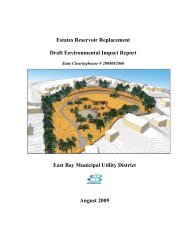FROM: Lisa Sorani, Manager of HR Employee Services LS -
FROM: Lisa Sorani, Manager of HR Employee Services LS -
FROM: Lisa Sorani, Manager of HR Employee Services LS -
You also want an ePaper? Increase the reach of your titles
YUMPU automatically turns print PDFs into web optimized ePapers that Google loves.
INVESTMENT OPTION 4-B<br />
r<br />
• Option 4 – B: Private Credit<br />
• Private Credit are investments in credit-related assets that are not publically traded<br />
o<br />
This can include loans to middle market firms, distressed debt, mezzanine loans, etc.<br />
• Due to the investments being private there is considerable illiquidity for the assets<br />
o<br />
This has benefits and drawbacks<br />
♦<br />
The major drawback is that t the funds that t do these type <strong>of</strong> investments t have private structures t (PE)<br />
♦ The rationale for this is the money has to be invested in a illiquid security or workout situation which dictates<br />
reduced access to the capital by Plan Sponsors<br />
♦ Fund-<strong>of</strong>-funds exist allowing for greater diversification<br />
• Relative to publically traded debt securities, private credit remains relatively cheap<br />
o<br />
Main reason for this is the illiquidity premium<br />
♦<br />
♦<br />
Many Plan Sponsors experienced predicaments during the credit crisis due to large illiquid investments; this<br />
greatly reduced their appetite for illiquid investments<br />
As a net inflow plan, EBMUD should not have any major liquidity needs for many years ahead<br />
Pension Consulting Alliance, Inc. ││ EBMUD Fixed Income Discussion │ 51

















